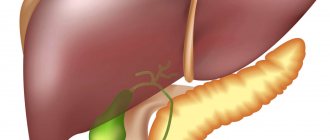Causes of diplopia
The most important and common cause of diplopia is considered to be various pathologies of the central parts of the visual analyzer and muscle imbalance. As a result of the weakening of the functions of the damaged muscles, the eye moves slightly to the side or loses its mobility. Pathological processes in the orbit can also provoke this disease. Paralysis of the extraocular muscles occurs, causing a violation of the coordination of movements of the eyeballs.
There are also such provoking factors:
- orbital injuries due to pinching of the eye muscles or fracture of the lower wall of the orbit;
- various diseases of the orbital cavity;
- hematomas and neoplasms that limit the movements of the eyeball up to complete immobilization;
- aneurysm of the carotid artery, accompanied by compression of the oculomotor nerve;
- injury to the oculomotor nerve as a result of damage to the skull;
- neurological diseases: tumors inside the skull or tuberculous meningitis;
- drug or alcohol intoxication;
- diabetes;
- multiple sclerosis;
- consequences of surgical operations to treat retinal detachment, cataracts, strabismus;
- psychoneuroses, attacks of hysteria.
Varieties
Double images don't always look the same. The disease has several forms, and therefore the following types of diplopia are distinguished:
- binocular - both eyes see with distortion. This violation is more common. Dysfunction occurs when the extraocular muscles are affected. If the fusion mechanism is changed, then sensory diplopia is diagnosed. The direction of the displacement can be any. Most often, horizontal or vertical diplopia occurs, less often - at an angle. Along with sensory diplopia, motor and mixed diplopia are distinguished. Binocular disorders include orbital and neuroparalytic diplopia;
- monocular - if double vision is detected in one eye, then eye injury or lens subluxation cannot be ruled out. This pathology also occurs when the iris is damaged, namely when it is separated from the ciliary body.
In the case of dysfunction of one eye, the clinical picture develops differently. There are several forms of monocular diplopia. Refractive error is considered the most harmless. It is easily corrected using optics and eye gymnastics. Neurogenic diplopia should be called difficult to treat. It occurs in hysteria and infectious diseases: encephalitis, meningitis. It is not entirely clear how to treat diplopia in this case, because it is more a symptom than an independent disease.
Other types of monocular disorders include:
- aberration – occurs when the lens or cornea is damaged. Accompanied by distortion of the shape of the cornea and clouding;
- Pupillary – before diplopia occurs, additional holes are formed in the iris, which leads to distortion of the picture;
- retinal - appears as a result of eye diseases. Occurs with vascular damage, dystrophic and inflammatory processes.
Crossed diplopia stands out. It belongs to a type of binocular disorder, but has a peculiarity. With this pathology, the image is projected crosswise. The disease is often accompanied by strabismus with a characteristic weakening of the VI and IV pairs of cranial nerves.
Symptoms of the disease
The main signs of diplopia are:
- splitting of objects and objects;
- difficulties in determining the location of objects;
- sudden and frequently recurring dizziness.
The presence of one or another symptom from the area where the pathological process is located. For example, if the oblique muscles are affected, then when looking at certain objects the patient will see them one above the other. With changes in the rectus muscles, the double vision of objects will be parallel. Also, the severity and manifestation of diplopia depend on how much the eye deviates in the direction opposite to the muscle. In order to somehow get rid of double vision, a person with diplopia turns his head in the direction where the source of the disease is located.
Classical therapy
A neurologist, neurosurgeon, rheumatologist, endocrinologist and other specialized specialists come to the aid of an ophthalmologist. Only complex therapy will ensure sustainable vision restoration and prevent relapses. Diplopia after surgical treatment does not require specific correction. All efforts of doctors are aimed at reducing the rehabilitation period. If a disorder is detected after blepharoplasty, then additional studies are carried out to clarify the functionality of the extraocular muscles. But usually the side effects of surgery go away quickly.
If double vision is detected in a child, then radical therapy can be dispensed with. Eye gymnastics has proven itself well. Eye exercises for diplopia include:
- strengthening muscles - for this purpose it is useful to move your eyes vertically and horizontally, in a circle and diagonally, along the sides of an imaginary square;
- accommodation training - it is necessary to alternately fix the gaze on near and distant objects;
- increasing visual acuity - to carry out the exercise, you need to fix a white sheet with a black stripe a meter from the patient. Fix your gaze on the strip so that the line is as clear as possible. Turn your head, holding the line and not allowing it to split. The exercise is contraindicated for sensory diplopia.
Optical correction will improve visual perception. An ophthalmologist prescribes prismatic glasses, but such treatment reduces the likelihood of natural vision restoration. If there is persistent diplopia due to strabismus of any etiology, then the optics are selected in such a way as to reduce the manifestations of strabismus.
For diplopia due to compression of nerve endings and blood vessels in the cervical spine, massage of the collar area is recommended. If visual impairment occurs after a stroke, then efforts are aimed at restoring cerebral circulation, which is achieved with the help of exercise therapy and medications.
Diplopia itself is practically untreatable, but the elimination of provoking factors will allow restoration of normal vision.
If optical correction is ineffective, surgical treatment is advisable. To eliminate double vision, injections of botulinum toxin are given, and in extreme cases, tightening of the extraocular muscles. Persistent diplopia due to strabismus of any etiology cannot be treated, and only surgical correction will restore the symmetry of the eyeballs and binocular vision.
Types of diplopia
In medicine, there is a division of diplopia into several types:
- Binocular diplopia or diplopia of one eye. In this case, the patient views the object with both eyes, but the image is incorrectly displayed on the retina, since there are deviations in the visual axis in one eye.
- Monocular diplopia. Objects are viewed with one eye, but the image passes to two different parts of the retina. The cause of this phenomenon may be clouding of the lens, iridocyclitis, or polycoria.
- Paralytic diplopia is a pathology caused by paralysis of the eye muscles.
- Crossed diplopia is the most difficult for patients to tolerate, since the images are projected crosswise, and it is almost impossible to see anything.
Double vision: treatment
Diplopia cannot be ignored, whether it is an independent disease or a symptom of a disease in other organs. If the cause of the problem is diseases of other organs, then treatment should begin with them. At the same time, methods for treating eye diseases can also be used as symptomatic therapy. The most effective is a comprehensive fight against diplopia.
Classic methods of treating diplopia include:
- Prismatic correction. It involves the use of glasses equipped with prisms. They refract the rays in such a way that the perceived image shifts. The advantage of such glasses is the ability to replace them with prisms that have a different refractive angle when vision begins to recover.
- Occlusion. This treatment method involves “turning off” one of the organs of vision. If several nerves are damaged at the same time, this treatment method is optimal. It involves using a thin opaque tape on the lenses of glasses or wearing a patch to cover one eye. But in modern ophthalmology, special contact lenses are increasingly used, with the help of which you can “turn off” one eye.
- Botulinum toxin injections. Using local anesthesia, Botox is injected into the eye muscle, which immobilizes it.
- Surgical treatment. To restore the symmetry of the position of the eyes, surgery is sometimes required, but it is used extremely rarely. The operation is performed under general anesthesia. In the vast majority of cases, it allows you to completely restore vision.
Diagnostics
The primary diagnosis can be established when visiting an ophthalmologist. A patient who complains of double vision will be diagnosed as “questionable” and additional diagnostic procedures will be prescribed. Firstly, this will be a test control of the patient's vision, whose gaze is directed towards a moving light source. The doctor will plot the resulting images on a special coordinate map and find out which of the eye muscles is defective.
At the moment, there is a more modern way to determine the focus of pathology. This procedure is called coordimetry. It is performed using an OK ophthalmocoordimeter.
Also, when diagnosing this disease, an ophthalmological cover test is performed. And, of course, the doctor is obliged to examine the conjunctiva of the eyeballs, check visual acuity, refraction and color perception.
Preventing double vision
The disease is characterized by unpredictability. This means that it can occur at any time for a variety of reasons. There are no special measures to prevent it, but general measures can be taken to reduce the risk of eye diseases, including diplopia:
- Quitting bad habits - drinking alcohol, smoking.
- Maintaining an active, healthy lifestyle, including feasible physical activity, normal rest, and proper nutrition.
- Regular medical examination. At the same time, it is necessary to visit not only an ophthalmologist, but also all other doctors for the timely detection of pathologies that can overtake the organs and systems of the body.
- Do daily eye exercises.
Examination of the patient
Diagnostic measures are carried out to identify the location of the disorder and the cause of the deviation for subsequent treatment. Since the disease determines the functioning of the eye itself, its nerve, the alternative eye device and especially the brain.
During the examination, ophthalmoscopy and visimetry are performed. It is mandatory to analyze the conjunctiva, light beam refraction, visual acuity and color perception. After which testing is performed - questions to which the patient must answer.
Typically, diagnosis includes ultrasound, MRI and CT . Additionally, the specialist may recommend contacting other doctors, such as a neuro-ophthalmologist, psychiatrist, neurologist, dermatovenerologist, rheumatologist, oncologist and endocrinologist.
Diplopic provocation with coordiometry can serve as a diagnostic method in the presence of strabismus.
These diagnostic methods produce vision tracking tests. In this case, the person being examined focuses his eyes following the moving light source. Then, based on the results of the study, the values are transferred to the coordinate map. This is how damage to existing muscles is revealed.
Classification
The following types of diplopia are known to medicine:
- binocular diplopia - develops in three forms (sensory, motor, mixed), the most common type of pathology;
- monocular diplopia is much less common; monocular diplopia has its own forms of development: refractive, aberration, papillary, retinal.
There is also temporary diplopia, which appears after a head injury or after severe alcohol poisoning. This deviation passes very quickly. There is also a strong-willed one, when a person himself provokes this state.
There are horizontal and vertical diplopia, depending on the plane in which the image splits.












